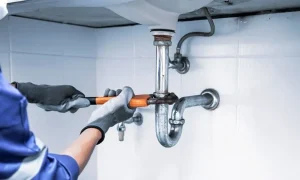Recognizing the Unseen Signs of Indoor Air Pollution

Many homeowners assume their indoor air remains cleaner than outdoor environments. This assumption proves incorrect in countless homes across America daily. Air pollution indoors often exceeds outdoor pollution levels significantly. Hidden contaminants accumulate inside homes without obvious warning signs appearing.
Common household activities create invisible pollutants that impact health gradually. Cooking, cleaning, and heating systems release harmful particles continuously. Poor ventilation traps these contaminants inside living spaces indefinitely. Many people experience symptoms without connecting them to air quality. This blog covers the subtle indicators of indoor air pollution problems.
Hidden Sources Creating Indoor Contamination
Everyday household items release toxic chemicals into indoor air regularly. Furniture made with pressed wood contains formaldehyde that off-gases constantly. Carpets and rugs trap dust mites, pet dander, and bacteria. New paint, adhesives, and building materials emit volatile organic compounds. These sources operate silently without immediate health warnings. Pesticides used indoors linger in air for extended periods. Gas stoves and fireplaces produce carbon monoxide and nitrogen dioxide. Even personal care products like hairsprays add pollutants to indoor air.
Physical Symptoms Often Overlooked
Air pollution manifests through subtle health symptoms that people dismiss. Frequent headaches may indicate poor air quality rather than stress. Persistent fatigue could result from breathing contaminated air continuously. Eye irritation and dryness often stem from airborne chemical particles. These symptoms typically worsen when spending time indoors. Respiratory issues provide clear indicators of air quality problems at home. Coughing without illness suggests irritant exposure from indoor pollutants.
Behavioral and Cognitive Warning Signs
Air pollution affects mental clarity and cognitive function significantly. Difficulty concentrating may result from breathing polluted air throughout the day. Memory problems can develop from long-term exposure to indoor contaminants. Mood changes and irritability often increase with poor air quality. Sleep disturbances frequently occur in rooms with contaminated air. Children and elderly individuals show more pronounced behavioral changes from pollution. Academic performance may decline when children breathe polluted air at home.
Environmental Indicators Within the Home
Visual clues reveal indoor pollution problems in air that require immediate attention. Dust accumulation increases rapidly in homes with poor air circulation. Musty odors indicate mold growth and moisture problems affecting air quality. The following environmental signs warrant immediate investigation and professional assessment:
- Unusual staining or discoloration on walls and furniture surfaces
- Persistent odors that cleaning cannot eliminate completely
- Visible mold growth in bathrooms, basements, or other areas
- Excessive dust despite regular cleaning and maintenance efforts
- Condensation problems on windows and other glass surfaces
Technology and Detection Methods Available
Modern air quality monitors provide real-time data about indoor pollution levels. These devices measure particulate matter, chemicals, and humidity levels continuously. Smart home systems can alert homeowners to air quality problems. Professional testing services identify specific pollutants and contamination sources accurately. The following testing methods help identify specific indoor air pollution sources:
- Professional air sampling for chemical and biological contaminants analysis
- Radon testing kits for detecting radioactive gas accumulation levels
- Mold inspection services for identifying fungal growth and spore presence
- Carbon monoxide testing to ensure safe appliance operation and ventilation
- Volatile organic compound testing for chemical off-gassing from materials and products
Long-term Health Impact Recognition
Chronic exposure to air pollution indoors creates serious health consequences over time. Respiratory diseases develop gradually from breathing contaminated air for years. Cardiovascular problems can result from long-term particulate matter exposure indoors. Cancer risks increase with prolonged exposure to certain indoor chemicals. Immune system function may weaken from constant toxin exposure. Early recognition and intervention prevent serious health complications from developing later.
Indoor air pollution creates numerous health and environmental warning signs that often go unnoticed. Physical symptoms, behavioral changes, and environmental indicators provide valuable clues about air quality problems. Early recognition enables prompt action to protect family health and prevent long-term complications. Professional assessment and testing services help identify specific pollution sources requiring immediate attention.



